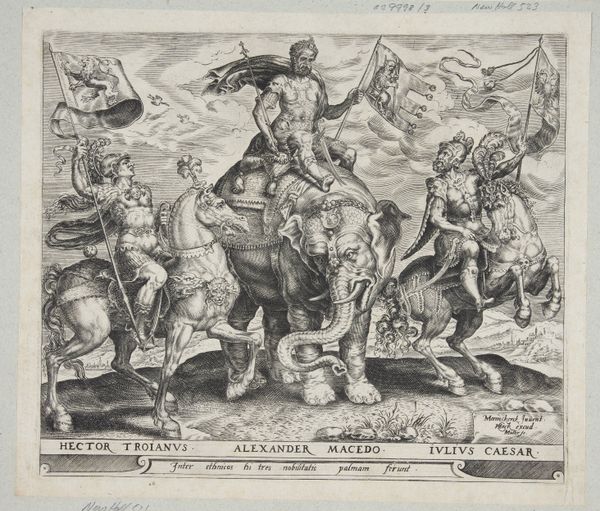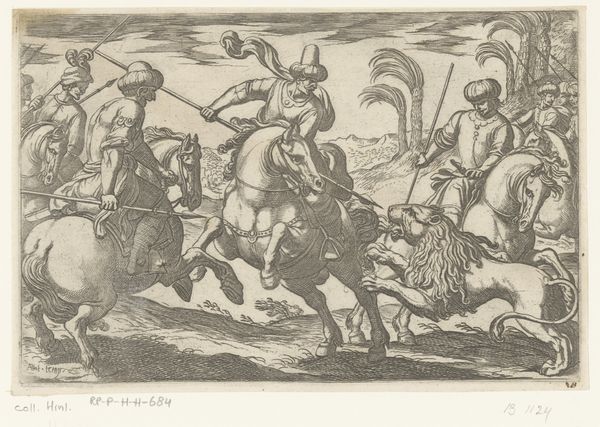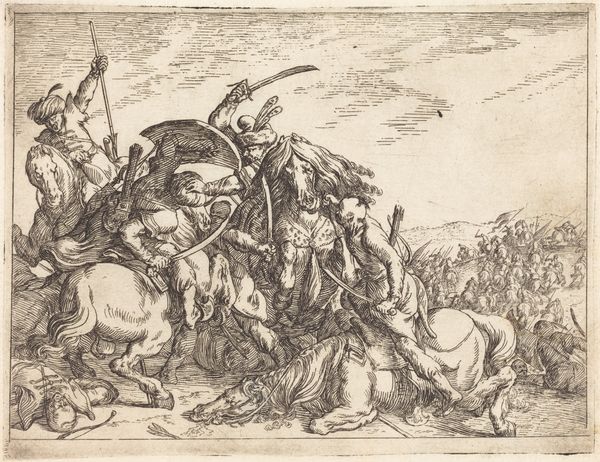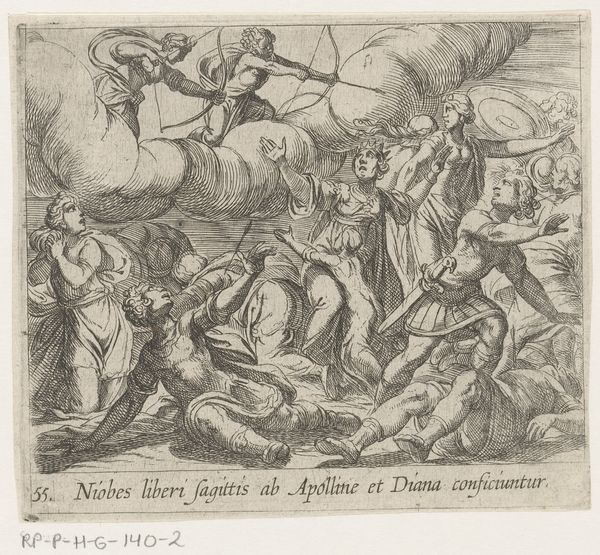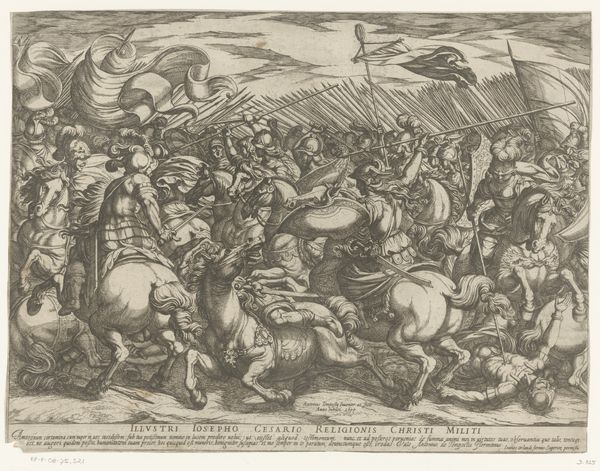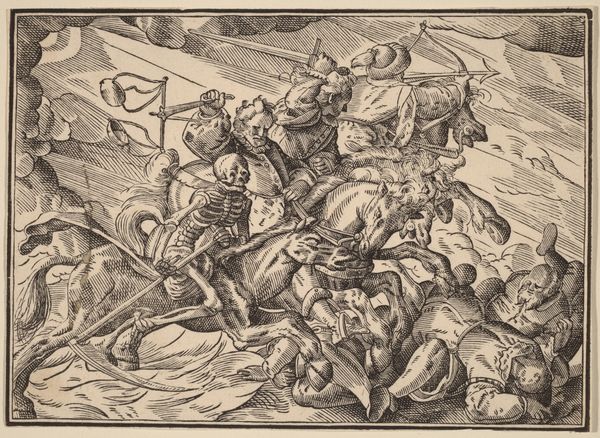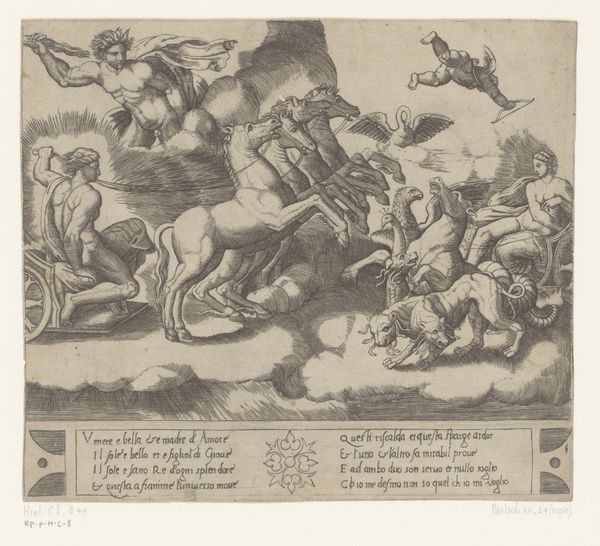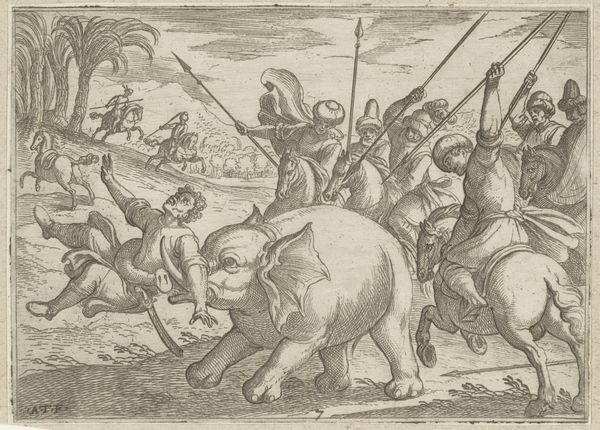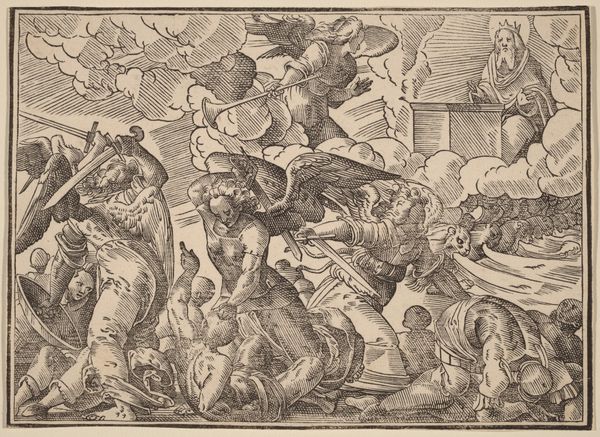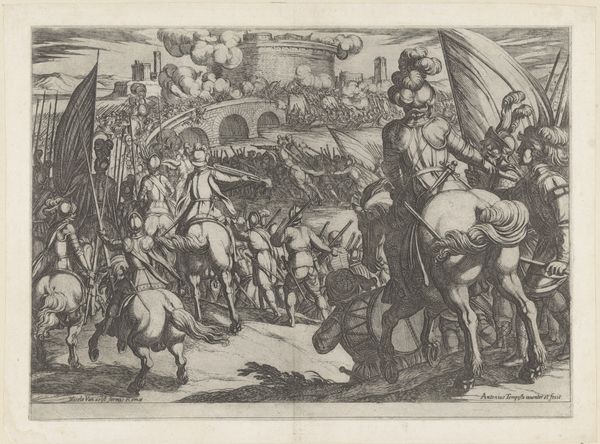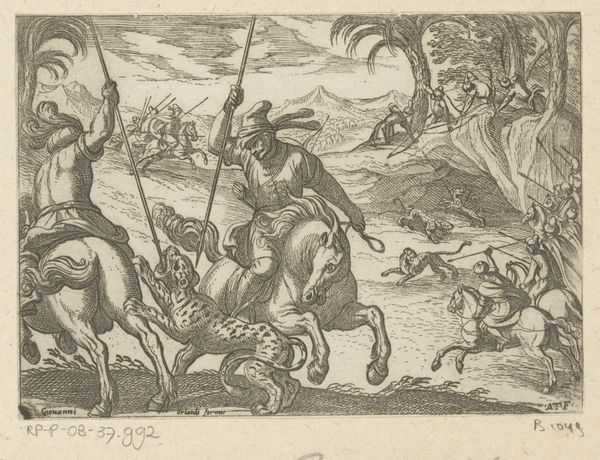
Plate 12: The Death of Phaeton (Phaetonis casus.), from Ovid's Metamorphoses 1606
0:00
0:00
drawing, print, etching
#
drawing
#
allegory
# print
#
etching
#
landscape
#
mannerism
#
figuration
#
horse
#
men
#
history-painting
Dimensions: Sheet: 4 1/8 × 4 3/4 in. (10.5 × 12 cm)
Copyright: Public Domain
Curator: Alright, next up we have “The Death of Phaeton” by Antonio Tempesta, an etching created in 1606, now residing at the Metropolitan Museum of Art. It’s quite a dramatic scene, isn’t it? Editor: Chaotic! It’s a swirling mess of bodies, horses, and clouds. I can almost feel the panic and desperation radiating off the page, even though it's just black lines. Curator: Tempesta really captures that Mannerist drama. The composition is pure energy. We see Phaeton, son of Helios, losing control of his father’s sun chariot, with Zeus about to strike him down with a thunderbolt. The horses are completely wild. Editor: Those horses... they’re symbols of untamed power, aren't they? A force that’s unleashed but totally out of control. I see it as more than just horses gone wild, it represents the consequence of Phaeton's hubris—that classic Greek flaw. Trying to be something he wasn't, reaching for something beyond his grasp. Curator: Absolutely. And Zeus up there, with his lightning bolt, embodies divine justice. The whole story is right here in front of us: ambition, disaster, punishment. Etchings like this made classical stories accessible; like ancient memes spreading morality tales. Editor: A visual cautionary tale. And Tempesta’s use of line—it's almost frenetic! Short, sharp strokes create a sense of instability. Everything is in motion, nothing feels grounded. Curator: That’s typical of Mannerism; a deliberate rejection of Renaissance harmony and balance, a sort of organized chaos reflecting inner turmoil. He’s less concerned with accurate representation and more interested in emotional impact. Think of the twisting figures. Editor: They’re really flailing! You know, beyond the mythology, I think this speaks to something universal, this feeling of losing control, of being overwhelmed. And it still hits, doesn’t it? The human element. The fear, consequence. Curator: Absolutely. The narrative is timeless; about boundaries, and limits, and about, what happens when we break them. It also reminds us about hubris, this almost childlike desire to prove something—with a consequence attached when it goes wrong. Editor: Exactly. Looking at it now, it's fascinating how Tempesta manages to cram so much narrative into such a small space. Like a whirlwind of a story made to fit a frame. Curator: That’s a fantastic way of putting it, so if you're at the Met, and in front of it; stop and marvel! It may seem small at first, but "The Death of Phaeton" delivers quite a powerful, swirling, story. Editor: Yeah. Give yourself a minute. This one pulls you in, and you might just recognise yourself or someone you know, flying too close to the sun!
Comments
No comments
Be the first to comment and join the conversation on the ultimate creative platform.
